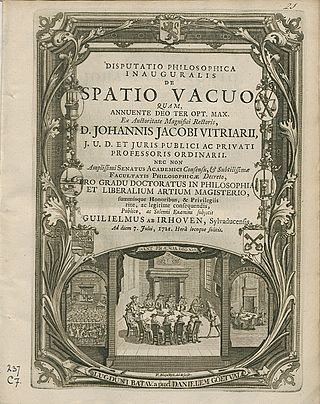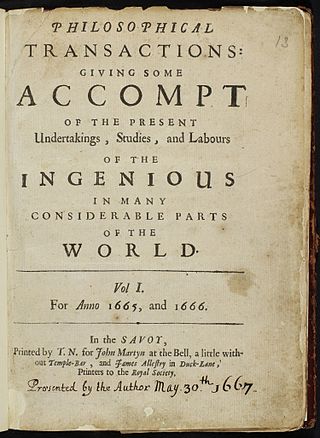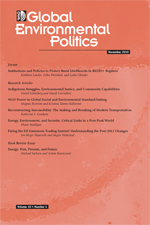
In academic publishing, a scientific journal is a periodical publication intended to further the progress of science, usually by sharing findings from research with readers. They are normally specialized based on discipline, with authors picking which one they send their manuscripts to.
Collaborative writing is a procedure in which two or more persons work together to create a written document or content. This writing tool takes many different forms, including but not limited to academic papers, reports, creative writing, projects, and business proposals. Success in collaborative writing involves a division of labor, unique insights, and most importantly writing techniques. Oftentimes through a shared document, collaborators add edits, provide feedback, and record changes. Collaborative writing is often used in professional as well as educational settings, utilizing the expertise of those involved in the collaboration process.(Storch, 2005)
A white paper is a report or guide that informs readers concisely about a complex issue and presents the issuing body's philosophy on the matter. It is meant to help readers understand an issue, solve a problem, or make a decision. A white paper is the first document researchers should read to better understand a core concept or idea. Since the 1990s, this type of document has proliferated in business. Today, a business-to-business (B2B) white paper is closer to a marketing presentation, a form of content meant to persuade customers and partners and promote a certain product or viewpoint. That makes B2B white papers a type of grey literature.

A thesis, or dissertation, is a document submitted in support of candidature for an academic degree or professional qualification presenting the author's research and findings. In some contexts, the word thesis or a cognate is used for part of a bachelor's or master's course, while dissertation is normally applied to a doctorate. This is the typical arrangement in American English. In other contexts, such as within most institutions of the United Kingdom and Republic of Ireland, the reverse is true. The term graduate thesis is sometimes used to refer to both master's theses and doctoral dissertations.
The scientific community is a diverse network of interacting scientists. It includes many "sub-communities" working on particular scientific fields, and within particular institutions; interdisciplinary and cross-institutional activities are also significant. Objectivity is expected to be achieved by the scientific method. Peer review, through discussion and debate within journals and conferences, assists in this objectivity by maintaining the quality of research methodology and interpretation of results.

Scientific literature comprises academic papers that report original empirical and theoretical work in the natural and social sciences. Within a field of research, relevant papers are often referred to as "the literature". Academic publishing is the process of contributing the results of one's research into the literature, which often requires a peer-review process.
In scientific writing, IMRAD or IMRaD is a common organizational structure. IMRaD is the most prominent norm for the structure of a scientific journal article of the original research type.
An abstract is a brief summary of a research article, thesis, review, conference proceeding, or any in-depth analysis of a particular subject and is often used to help the reader quickly ascertain the paper's purpose. When used, an abstract always appears at the beginning of a manuscript or typescript, acting as the point-of-entry for any given academic paper or patent application. Abstracting and indexing services for various academic disciplines are aimed at compiling a body of literature for that particular subject.

Academic writing or scholarly writing is nonfiction writing produced as part of academic work in accordance with the standards and disciplines of each academic subject, including:
Collaborative editing is the process of multiple people editing the same document simultaneously. This technique may engage expertise from different disciplines, and potentially improve the quality of documents and increase productivity.

An academic conference or scientific conference is an event for researchers to present and discuss their scholarly work. Together with academic or scientific journals and preprint archives, conferences provide an important channel for exchange of information between researchers. Further benefits of participating in academic conferences include learning effects in terms of presentation skills and “academic habitus”, receiving feedback from peers for one's own research, the possibility to engage in informal communication with peers about work opportunities and collaborations, and getting an overview of current research in one or more disciplines.
Abstract management is the process of accepting and preparing abstracts for presentation at an academic conference. The process consists of either invited or proffered submissions of the abstract or summary of work. The abstract typically states the hypothesis, tools used in research or investigation, data collected, and a summary or interpretation of the data.
A working paper or work paper may be:

The ACM Web Conference is a yearly international academic conference on the topic of the future direction of the World Wide Web. The first conference of many was held and organized by Robert Cailliau in 1994 at CERN in Geneva, Switzerland. The conference has been organized by the International World Wide Web Conference Committee (IW3C2), also founded by Robert Cailliau and colleague Joseph Hardin, every year since. In 2020, the Web Conference series became affiliated with the Association for Computing Machinery (ACM), where it is supported by ACM SIGWEB. The conference's location rotates among North America, Europe, and Asia and its events usually span a period of five days. The conference aims to provide a forum in which "key influencers, decision makers, technologists, businesses and standards bodies" can both present their ongoing work, research, and opinions as well as receive feedback from some of the most knowledgeable people in the field.

Global Environmental Politics (GEP) is a quarterly peer-reviewed academic journal which examines the relationship between global political forces and environmental change. It covers such topics as the role of states, international finance, science and technology, and grass roots movements. Issues of Global Environmental Politics are divided into three types of articles: short commentaries for a section called Current Debates/Forum, full-length research articles, and book review articles.
The American Society for Horticultural Science (ASHS) is the world’s premier professional society for horticultural science. Founded in 1903, the mission of ASHS is to promote and encourage national and international interest in scientific research and education in horticulture in all its branches. The more than 2500 ASHS members in all 50 states and 60 countries around the world fulfill this mission by sharing the results of their research, teaching, extension, and community engagement activities with their colleagues and humankind the world over.
The World Forestry Congress (WFC) is the largest and most significant gathering of the world's forestry sector and it has been held every six years since 1926 under the auspices of the Food and Agriculture Organization (FAO) of the United Nations, organized by the government of the host country. It is a forum for the sharing of knowledge and experience regarding the conservation, management and use of the world's forests, and covers such issues as international dialogue, socio-economic and institutional aspects, and forest policies.
The publication cycle is the process through which authors take their ideas and put them into viewable form. This includes all forms of publication, from initial research reports to articles posted on websites, and commonly recognized magazine articles and books.
Academic discourse socialization is defined as one's growing process to realize the academic discourse and reach the expectation of the academic community. Academic discourse socialization is a form of language socialization through which newcomers or novices gain knowledge of the academic discourses by socializing and interacting with peers, experts, or more knowledgeable people in their community and social network. A dynamic and complex process, academic discourse socialization requires negotiation of both knowledge and one's identity. This kind of interaction is defined as a bidirectional process in which both novice learners and experts learn from one another.
A micro-conference is a small scale conference that allows researchers to present and discuss their work. They provide a channel for the exchange of nascent ideas and an opportunity for academic collaboration.






